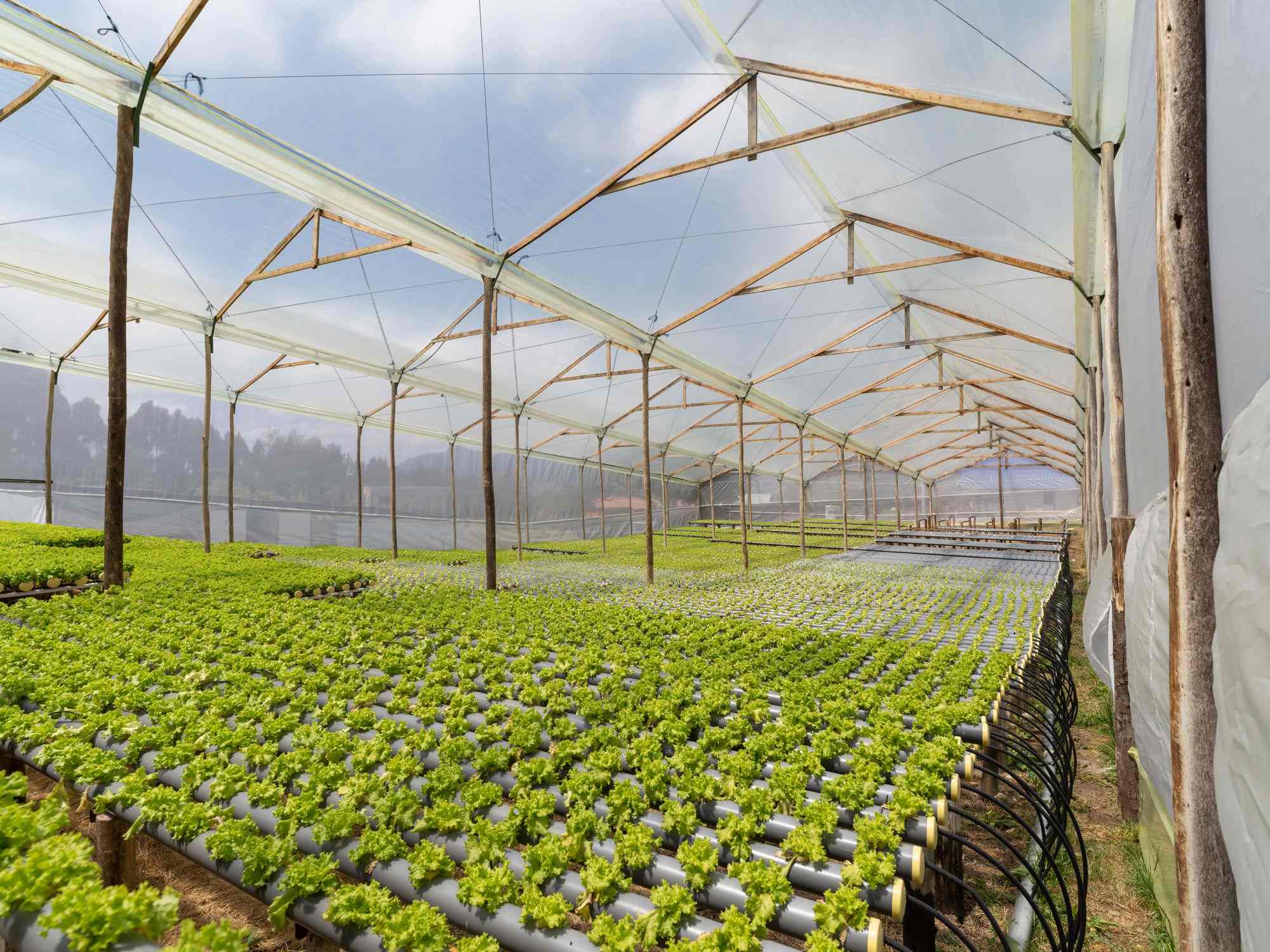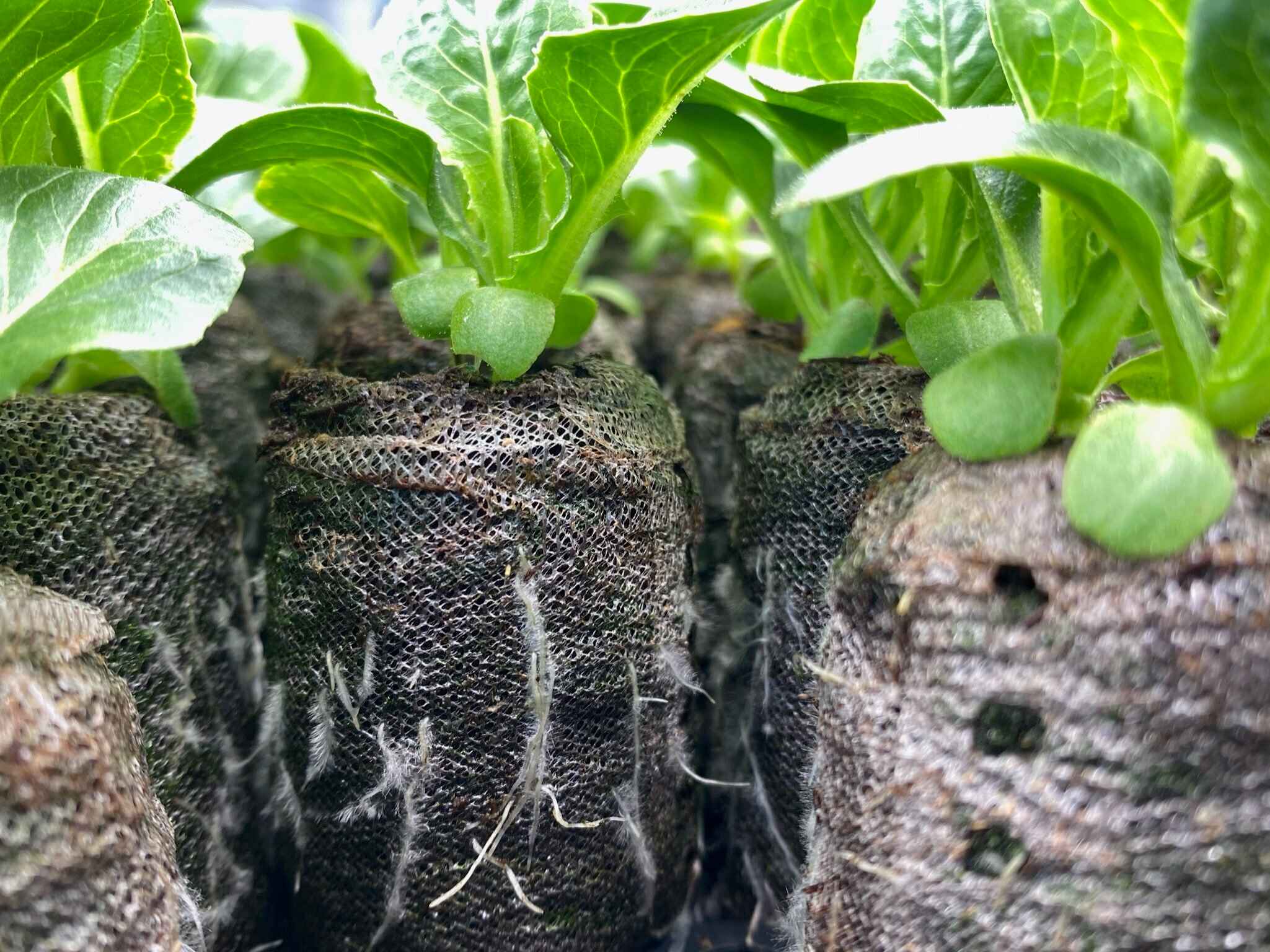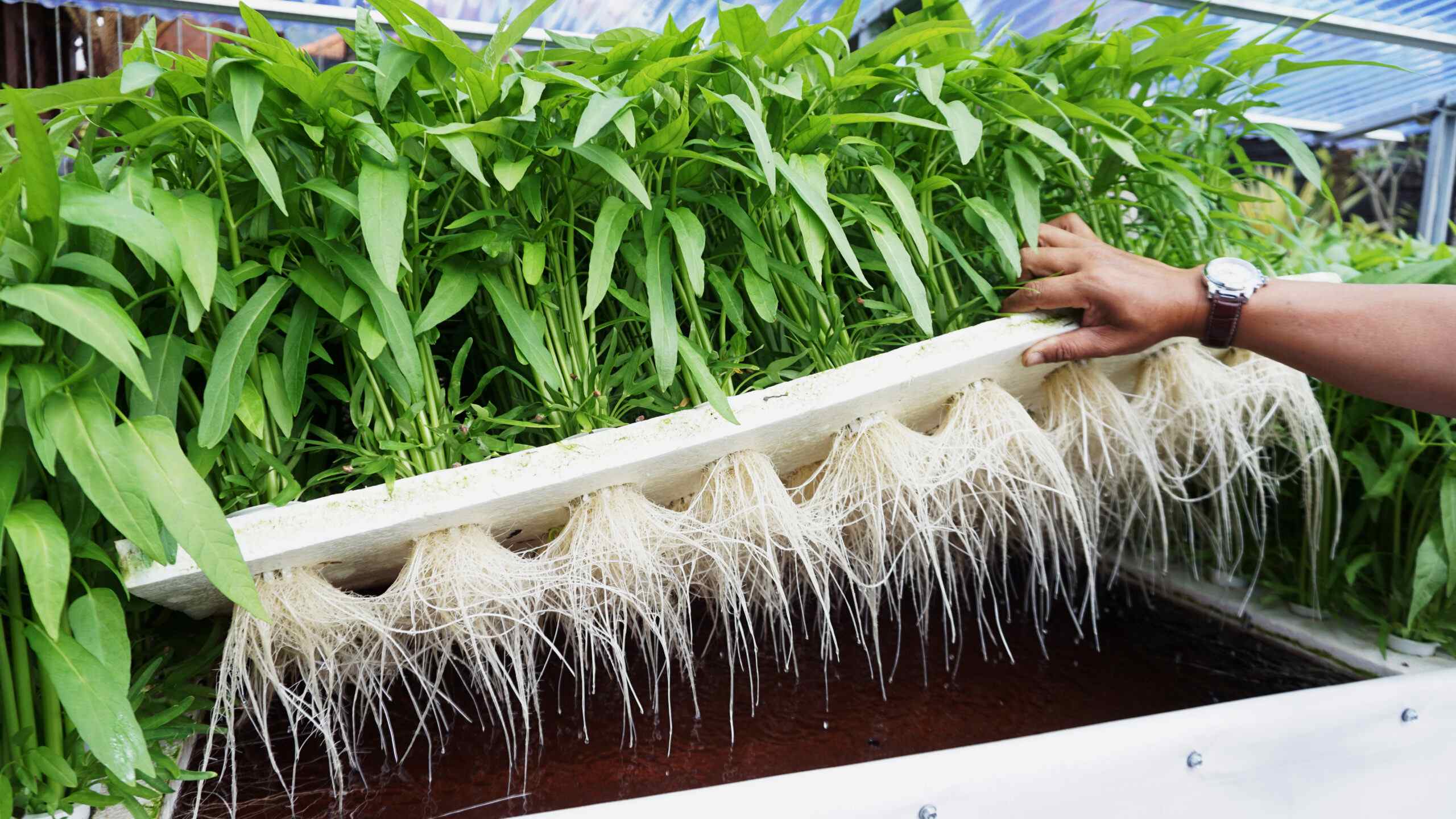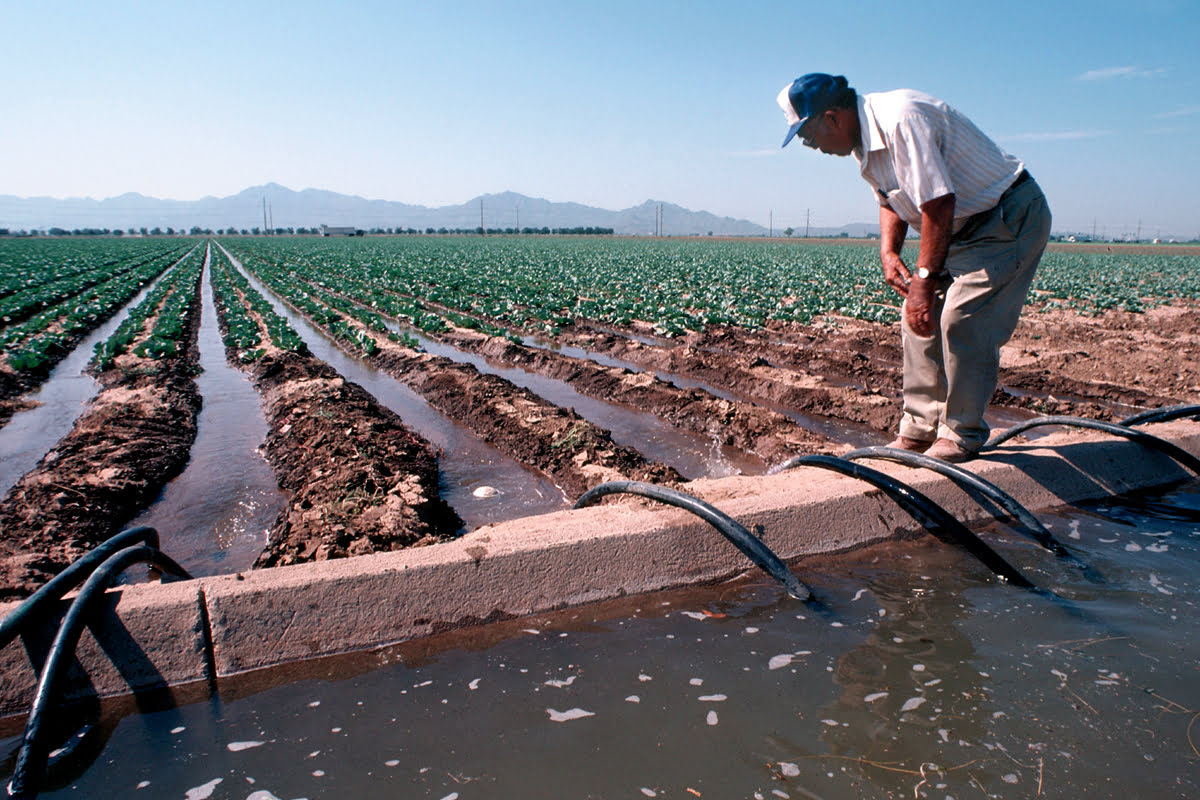Home>Gardening News and Trends>Latest News>Why Is The Use Of Hydroponics Farming Most Likely Going To Increase In The Future?


Latest News
Why Is The Use Of Hydroponics Farming Most Likely Going To Increase In The Future?
Modified: February 10, 2024
Discover the latest news and trends in the world of hydroponics farming. Find out why the use of hydroponics is expected to increase significantly in the future.
(Many of the links in this article redirect to a specific reviewed product. Your purchase of these products through affiliate links helps to generate commission for Chicagolandgardening.com, at no extra cost. Learn more)
Table of Contents
- Introduction
- Definition of Hydroponics Farming
- Advantages of Hydroponics Farming
- Increasing Demand for Sustainable Agriculture
- Limited Land Availability and Urbanization
- Climate Change and Extreme Weather Conditions
- Water Conservation and Efficient Resource Use
- Technological Advances in Hydroponics Farming
- Financial Viability and Profitability
- Conclusion
Introduction
As the global population continues to grow and the demand for food increases, traditional farming methods face challenges in meeting these needs sustainably. This has led to the rise of alternative farming techniques, with hydroponics farming emerging as a promising solution for the future.
Hydroponics farming is a method of growing plants without soil by using mineral nutrient solutions in water, which provides all the required nutrients for plant growth. The plants are typically grown in various mediums such as perlite, vermiculite, or coconut fiber, allowing them to absorb the necessary nutrients directly from the water.
The use of hydroponics farming offers several advantages over conventional farming methods. Firstly, it allows for optimized resource use and increased crop yields. With the ability to control the nutrient levels, pH, and water supply, plants grown hydroponically can receive precisely what they need for optimal growth. This results in faster growth rates and higher yields compared to traditional farming methods.
Moreover, hydroponics farming is not limited by geographical constraints. Traditional farmers are often restricted by factors such as climate, soil conditions, and land availability. In contrast, hydroponics farming can be implemented in any location, regardless of the surrounding environment. This opens up possibilities for urban farming, rooftop gardens, and vertical farming systems, making it feasible to grow fresh produce in areas with limited access to arable land.
Another driving factor behind the increasing use of hydroponics farming is the need for sustainable agriculture. Conventional farming practices often rely heavily on chemical fertilizers and pesticides, leading to soil degradation, water pollution, and negative impacts on ecosystems. Hydroponics farming reduces these risks by utilizing controlled environments that minimize the need for harmful chemicals, resulting in healthier and more eco-friendly crop production.
Overall, the future of hydroponics farming looks promising. The increasing global demand for food, combined with the need for sustainable and efficient agricultural practices, has created a favorable environment for the growth of hydroponics farming. With advancements in technology and ongoing research, this method has the potential to revolutionize the way we produce and consume food, ensuring a greener and more secure food supply for generations to come.
Definition of Hydroponics Farming
Hydroponics farming is a modern agricultural practice that involves growing plants without using soil as the primary medium. Instead, plants are cultivated in a nutrient-rich water solution that provides all the essential nutrients required for their growth and development. The word “hydroponics” originates from the Greek words “hydro” meaning water and “ponos” meaning labor, emphasizing the water-based nature of this farming method.
In hydroponics farming, plants are typically grown in a controlled environment such as greenhouses or indoor facilities. The water solution, known as the nutrient solution, is carefully formulated to provide a balanced mixture of essential nutrients that are essential for plant growth. These nutrients include macronutrients such as nitrogen, phosphorus, and potassium, as well as micronutrients like iron, zinc, and copper. The pH level of the solution is also closely monitored and adjusted to ensure optimal nutrient uptake by the plants.
The plants in hydroponics farming are supported by various types of growing mediums instead of soil. These mediums can include perlite, vermiculite, rockwool, coconut coir, or even just water. The role of the growing medium is to anchor the plants’ roots and provide stability while allowing them to access the nutrient-rich water solution. Unlike traditional soil-based farming, hydroponics eliminates the limitations of soil quality, ensuring consistent nutrient availability and preventing issues such as nutrient deficiencies or excesses.
One of the key advantages of hydroponics farming is its water-efficient nature. Unlike conventional farming methods, which can lead to water wastage through evaporation and inefficient irrigation, hydroponics allows for precise control over water usage. By using recirculating systems and drip irrigation, water consumption can be significantly reduced while ensuring that plants receive an adequate water supply. Additionally, the nutrient solution used in hydroponics farming can be recycled, further conserving water resources.
Furthermore, hydroponics farming offers the advantage of space utilization. The elimination of soil means that plants can be grown in a more compact manner, making it suitable for urban environments where land availability is limited. Vertical farming systems, where plants are stacked vertically, can maximize space utilization and increase crop yield per unit area.
Overall, hydroponics farming revolutionizes conventional agricultural practices by offering a more efficient and sustainable farming method. It provides an alternative solution for growing crops in areas with poor soil quality or limited land availability. With its water-saving capabilities, precise nutrient control, and potential for year-round cultivation, hydroponics farming holds great promise for feeding the growing global population while reducing the environmental impacts associated with traditional farming methods.
Advantages of Hydroponics Farming
Hydroponics farming offers several advantages over traditional soil-based farming methods. These advantages contribute to its increasing popularity and make it a promising solution for sustainable agriculture. Here are some of the key advantages:
- Optimized Resource Use: Hydroponics allows for precise control over nutrient levels, pH, and water supply, ensuring that plants receive the optimal conditions for growth. With this control, plants can grow faster and produce higher yields compared to traditional farming methods.
- Higher Crop Yields: The controlled environment of hydroponics farming eliminates the limitations of soil quality, pests, and diseases. This results in healthier plants and higher crop yields, making it an efficient method for maximizing food production.
- Water Efficiency: Hydroponics farming uses significantly less water compared to conventional farming methods. The use of efficient irrigation systems, such as drip irrigation, along with recycling and reusing the nutrient solution, helps conserve water resources and reduce wastage.
- Year-Round Cultivation: Hydroponics systems allow for year-round cultivation, regardless of external weather conditions. Indoor facilities, such as greenhouses or vertical farming systems, provide a controlled climate, ensuring consistent plant growth and continuous harvests.
- Space Utilization: Hydroponics farming is ideal for urban environments or areas with limited land availability. By eliminating the need for soil, plants can be grown vertically or in compact spaces, maximizing land utilization and increasing crop yield per unit area.
- Reduced Environmental Impact: Traditional farming practices often involve the use of chemical fertilizers and pesticides, which can lead to soil degradation, water pollution, and harm to ecosystems. Hydroponics farming eliminates or minimizes the need for these chemicals, resulting in more sustainable and eco-friendly crop production.
- Year-Round Availability of Fresh Produce: With the ability to grow crops indoors and in controlled environments, hydroponics farming allows for the continuous production of fresh produce, regardless of seasonal limitations or geographical constraints. This can help meet the increasing demand for locally-grown, fresh food.
These advantages highlight the potential of hydroponics farming as a solution for sustainable and efficient agricultural practices. By optimizing resource use, conserving water, and reducing environmental impact, hydroponics farming offers a more viable and sustainable approach to meeting the growing global food demand.
Increasing Demand for Sustainable Agriculture
There is a growing global demand for sustainable agriculture practices, driven by various factors such as environmental concerns, health consciousness, and the need for long-term food security. This increasing demand has created a favorable environment for the adoption of hydroponics farming, which offers a more sustainable and efficient approach to food production.
One of the main drivers behind the demand for sustainable agriculture is the increasing awareness of environmental issues. Conventional farming practices often rely on synthetic fertilizers and pesticides, which can have negative impacts on soil health, water quality, and biodiversity. In contrast, hydroponics farming eliminates or significantly reduces the need for these chemicals, making it a more environmentally-friendly method of food production.
Consumers are also increasingly concerned about the nutritional value and safety of their food. Hydroponics farming allows for precise control over nutrient levels, resulting in crops that are often more nutritious and free from contaminants. This aspect of hydroponic farming makes it an attractive option for health-conscious consumers who prioritize fresh, high-quality produce.
Furthermore, the need for long-term food security is becoming more critical as the global population continues to grow. With limited arable land and the challenges posed by climate change, traditional farming methods may struggle to meet the increasing demand for food. Hydroponics farming offers a solution by utilizing space-efficient techniques and controlled environments to maximize crop yields. This allows for year-round cultivation, ensuring a steady and reliable supply of fresh produce.
Additionally, hydroponics farming can contribute to reducing the carbon footprint of the agricultural sector. Conventional farming practices typically involve large amounts of energy consumption for irrigation, transportation, and the use of machinery. Hydroponics farming, with its water-saving capabilities and localized production, can significantly reduce the energy requirements and transportation distances associated with food production.
The increasing demand for sustainable agriculture is also fueled by government initiatives and support. Many countries are recognizing the importance of adopting environmentally-friendly farming practices and are offering incentives and subsidies for farmers who transition to sustainable methods like hydroponics farming. This support further encourages and accelerates the adoption of hydroponics as a viable alternative to traditional agriculture.
In summary, the growing demand for sustainable agriculture, driven by environmental concerns, health-conscious consumers, and the need for food security, presents a clear opportunity for hydroponics farming. With its environmentally-friendly nature, nutritional benefits, space-efficient techniques, and potential for year-round cultivation, hydroponics is well-positioned to meet the demands of a more sustainable and efficient food production system.
Limited Land Availability and Urbanization
The rapid pace of urbanization and limited availability of arable land pose significant challenges to traditional agricultural practices. However, hydroponics farming offers a promising solution to these constraints, allowing for food production in areas with limited land resources.
Urbanization has led to the conversion of agricultural land into urban areas, resulting in a decrease in available land for farming. As cities expand, the distance between rural agricultural areas and urban centers increases, leading to longer transportation routes and increased carbon emissions. Hydroponics farming addresses this issue by allowing food production to take place within urban environments. Through rooftop gardens, vertical farming systems, and indoor facilities, hydroponics enables urban dwellers to have access to locally grown, fresh produce.
Another advantage of hydroponics farming in urban areas is its space-efficient nature. Traditional farming methods rely on expansive fields, but hydroponics eliminates the need for soil and allows plants to be grown vertically or in compact spaces. Vertical farming, in particular, involves stacking multiple layers of plants, maximizing land utilization and increasing crop yield per square meter. This allows for more efficient use of urban space, making it possible to grow significant amounts of food in smaller areas.
Furthermore, hydroponics farming can be implemented in areas that are unsuitable for traditional farming due to poor soil quality or contamination. By removing the reliance on soil, hydroponics opens up new possibilities for growing food in urban brownfields or polluted areas, where soil remediation may be costly or not feasible. With hydroponics, plants obtain nutrients directly from the water, eliminating concerns related to soil contamination and providing a safe and controlled environment for food production.
Hydroponics farming also offers benefits in terms of water usage in urban areas. Urban environments often face water scarcity, as the demand for water from various sectors increases. Traditional farming methods require significant amounts of water for irrigation, and much of it can be lost through evaporation and inefficient usage. In contrast, hydroponics farming is a water-efficient technique. Through the use of recirculating systems and improved irrigation methods like drip irrigation, hydroponics minimizes water consumption and reduces water wastage. This makes it an ideal solution for urban areas where water resources need to be conserved.
In summary, the limited availability of land and the trend of urbanization pose challenges to traditional agriculture. Hydroponics farming provides a viable solution by enabling food production within urban environments and making efficient use of limited space. By eliminating soil requirements, hydroponics allows for cultivation in areas with poor soil quality or contamination. Additionally, its water-efficient nature supports sustainable practices in urban locations where water resources may be scarce. The ability of hydroponics farming to adapt to urban challenges positions it as a key component of future food production systems.
Climate Change and Extreme Weather Conditions
Climate change and extreme weather events pose significant challenges to traditional agriculture, affecting crop yields and overall food production. However, hydroponics farming offers resilience against these challenges, providing a more reliable and consistent food supply in the face of a changing climate.
One of the primary impacts of climate change is the increase in extreme weather events such as droughts, floods, and heatwaves. These events can have detrimental effects on traditional farming, leading to crop failures, reduced yields, and economic losses. Hydroponics farming, with its controlled environment, offers protection against these risks. By providing water, nutrients, and ideal growing conditions directly to the plants’ roots, hydroponics ensures that crops receive consistent care regardless of external weather conditions.
Droughts, in particular, are becoming more frequent and intense due to climate change. Hydroponics farming is water-efficient, offering a significant advantage in water-scarce regions. The use of recirculating systems and drip irrigation minimizes water consumption and ensures that every drop is utilized effectively. Additionally, the ability to control the water supply closely allows hydroponic farmers to tailor irrigation schedules to match the specific needs of each plant, optimizing water usage and minimizing waste.
Furthermore, hydroponics farming mitigates the impact of extreme heat events by providing a controlled and favorable environment. Heatwaves can be detrimental to traditional crops, causing heat stress, wilting, and reduced productivity. In hydroponics systems, temperature and humidity levels can be carefully monitored and adjusted to maintain optimal growing conditions. This flexibility allows for year-round cultivation and the ability to grow crops that are typically sensitive to high temperatures, thus reducing the vulnerability of the agricultural sector to heat-related losses.
Another aspect of climate change is the alteration of traditional growing seasons and the unpredictability of weather patterns. Hydroponics farming offers a solution by providing a stable and consistent environment for plant growth. By growing crops indoors or in climate-controlled greenhouses, hydroponics farmers can ensure that plants receive the ideal conditions necessary for growth, regardless of the external climate. This enables year-round cultivation and eliminates the reliance on specific growing seasons, providing a more reliable and continuous food supply.
By offering resilience against the impacts of climate change and extreme weather events, hydroponics farming plays a vital role in ensuring food security in an uncertain future. Its ability to provide optimal growing conditions, adapt to changing climates, and conserve resources makes it an attractive and sustainable solution for farmers and communities globally.
Water Conservation and Efficient Resource Use
Water scarcity is a growing concern around the world, and traditional agriculture is often a significant contributor to water wastage. However, hydroponics farming offers a solution to this problem by providing water-efficient techniques and utilizing resources more efficiently.
One of the primary advantages of hydroponics farming is its water-saving capabilities. Traditional farming methods often rely on excessive amounts of water for irrigation, with much of it lost through evaporation, runoff, or inefficient usage. In contrast, hydroponics farming uses significantly less water. By employing recirculating systems, where water that is not absorbed by the plants is collected and reused, hydroponics reduces overall water consumption. This closed-loop system minimizes wastage and ensures that water is utilized more efficiently, making it a sustainable solution for regions facing water scarcity.
Moreover, hydroponics allows for precise control over the water supply to the plants. This enables farmers to optimize water usage by tailoring irrigation schedules and adjusting the amount of water provided to match the specific needs of different crops. By monitoring factors such as plant growth stage, outside temperature, and humidity levels, farmers can ensure that water is delivered exactly when and where it is needed, preventing overwatering and reducing water usage.
Another aspect of efficient resource use in hydroponics farming is the targeted delivery of nutrients to the plants. In traditional farming, nutrients are often applied to the soil, where they can be unevenly distributed and lost through leaching or runoff. With hydroponics, nutrients are delivered directly to the roots through the water solution, ensuring that plants receive precisely what they need for optimal growth. This eliminates wastage and promotes more efficient resource utilization, leading to higher crop yields and minimal environmental impact.
In addition to water and nutrient management, hydroponics farming can also optimize land usage. By eliminating the need for soil, plants can be grown vertically or in compact spaces, maximizing land efficiency. Vertical farming systems, in particular, allow multiple layers of plants to be cultivated in a limited area, increasing overall crop yield per unit of land. This efficient use of space is especially valuable in urban areas where land availability is limited, making hydroponics an attractive solution for urban farming and sustainable food production in densely populated regions.
In summary, hydroponics farming offers water conservation and efficient resource use, making it a sustainable solution for the future of agriculture. By minimizing water consumption through recirculating systems and targeted irrigation, hydroponics addresses the global issue of water scarcity. Additionally, the precise delivery of nutrients to plants and the space-efficient nature of hydroponics farming contribute to efficient resource utilization. These sustainable practices not only optimize crop growth and yield but also help to reduce environmental impact and promote a more sustainable and resource-efficient food production system.
Technological Advances in Hydroponics Farming
Technological advancements have played a crucial role in the development and expansion of hydroponics farming. From automation and remote monitoring to innovative lighting and climate control systems, these advances have revolutionized the efficiency, productivity, and sustainability of hydroponics farming.
One of the key technological advancements in hydroponics farming is automation. Automated systems have been developed to monitor and control various aspects of the growing environment. This includes monitoring and adjusting temperature, humidity, nutrient levels, and pH balance in real-time. Automated irrigation systems ensure that plants receive the optimal amount of water, reducing water waste and ensuring efficient water usage. These automation technologies not only save time and labor but also contribute to the precise control and optimization of plant growth conditions.
Remote monitoring systems have also emerged as an essential technological tool in hydroponics farming. These systems allow farmers to remotely monitor and receive real-time data on crucial factors such as temperature, humidity, nutrient levels, and plant health. By accessing this information through mobile applications or cloud-based platforms, farmers can make informed decisions, detect potential issues early, and adjust growing conditions as needed. Remote monitoring increases efficiency, saves resources, and allows for proactive management of crops, resulting in improved yields and reduced losses.
Lighting technology has greatly advanced in recent years, benefiting hydroponics farming significantly. LED (Light Emitting Diode) lighting systems have become popular in hydroponics due to their energy efficiency, long lifespan, and ability to provide the ideal light spectrum for plant growth. LED lighting offers precise control over the light intensity and color spectrum, allowing farmers to customize lighting conditions according to plant requirements. This results in accelerated growth rates, improved crop quality, and energy savings compared to traditional lighting methods. Additionally, the compact nature of LED lights enables their integration into vertical farming systems, further optimizing space utilization.
Climate control systems have also witnessed significant advancements in hydroponics farming. These systems ensure that plants are exposed to optimal temperature, humidity, and airflow conditions throughout their growth cycle. Modern climate control technologies incorporate sensors, ventilation systems, and automated cooling and heating mechanisms to maintain a stable and suitable environment for plant growth. By providing the ideal climatic conditions, these systems enhance crop yields, optimize resource utilization, and minimize the risk of plant stress or diseases caused by unfavorable environmental conditions.
Advancements in data analytics and artificial intelligence (AI) have made their way into hydroponics farming as well. AI-based algorithms can analyze vast amounts of data collected from sensors and provide recommendations on crop management practices, nutrient optimization, and disease detection. This allows farmers to make data-driven decisions, improve efficiency, and reduce resource wastage. Additionally, AI can facilitate predictive modeling, helping farmers anticipate plant growth patterns, optimize harvest timing, and forecast crop yields.
Overall, technological advances have transformed hydroponics farming into a high-tech and efficient agricultural practice. Automation, remote monitoring, innovative lighting, climate control systems, and AI-powered analytics have improved precision, resource efficiency, and productivity in hydroponics farming. With continued advancements, the integration of technologies in hydroponics is expected to further optimize crop growth, enhance sustainability, and contribute to meeting global food demands in a more efficient and environmentally friendly manner.
Financial Viability and Profitability
When evaluating agricultural practices, financial viability and profitability play a crucial role in their adoption. Hydroponics farming has proven to be a financially viable and profitable venture for many farmers, thanks to several key factors.
Firstly, hydroponics farming offers the advantage of higher crop yields and faster growth rates compared to traditional farming methods. With precise control over nutrient levels, pH, and water supply, hydroponics ensures that plants receive optimal growing conditions, resulting in increased productivity. Higher crop yields translate directly into higher revenue for farmers, making hydroponics an attractive option for maximizing profitability.
In addition to higher yields, hydroponics farming allows for multiple planting cycles throughout the year, as plants can be grown year-round regardless of the external climate. This continuous production and quick turnover of crops can further enhance financial returns. Unlike traditional farming that often relies on seasonal harvests, hydroponics systems enable farmers to have a consistent and reliable supply of fresh produce, thus increasing market availability and potential profits.
Moreover, hydroponics farming is not limited by soil quality or geographical constraints. This provides flexibility and the opportunity to cultivate crops in areas where land availability is limited or problematic, such as urban environments or regions with poor soil conditions. The adaptability and scalability of hydroponics make it possible for farmers to start small and gradually expand their operations as they gain experience and market demand increases. This reduces the upfront investment required and allows farmers to manage and grow their businesses at a suitable pace.
Furthermore, hydroponics farming can be well-suited for niche markets. With the ability to grow a wide range of crops, including specialty and high-value produce, hydroponics farmers can cater to specific consumer preferences and target niche markets that command premium prices. This allows for higher profit margins and potential for diversification, resulting in increased financial viability and profitability.
Technology advancements in hydroponics farming have also contributed to its financial viability. Automation, remote monitoring systems, and data analytics help minimize labor costs and optimize resource usage. This technological integration can streamline operations, reduce human error, and improve efficiency, ultimately leading to higher profitability.
Government support and incentives also play a role in enhancing the financial viability of hydroponics farming. Many countries offer grants, subsidies, or tax benefits to farmers adopting sustainable agricultural practices, including hydroponics. These incentives can help offset initial setup costs, improve profitability, and provide a more favorable investment environment for hydroponics farmers.
While initial setup costs for hydroponics farming can be higher compared to traditional farming methods, the potential for increased yields, year-round production, niche market opportunities, and cost-saving technologies contribute to its financial viability and profitability. As the demand for fresh, locally grown produce continues to rise, hydroponics farming offers a promising and profitable solution for farmers seeking a sustainable and efficient approach to agriculture.
Conclusion
Hydroponics farming has emerged as a promising solution for the future of agriculture, driven by the increasing global demand for sustainable and efficient food production. Its numerous advantages, including optimized resource use, higher crop yields, water conservation, and year-round cultivation, make it a compelling option for farmers looking to adapt to the challenges of a changing world.
The ability of hydroponics farming to address constraints such as limited land availability, urbanization, climate change, and water scarcity positions it as a viable and resilient solution. By eliminating soil requirements and utilizing space-efficient techniques, hydroponics enables food production in urban areas and maximizes land utilization. Moreover, its precise control over nutrient levels, water supply, and growing conditions ensures optimal plant growth and higher yields, contributing to increased profitability for farmers.
Technological innovations in automation, remote monitoring, lighting, climate control, and data analytics have further improved the efficiency, precision, and sustainability of hydroponics farming. These advancements allow for better resource management, reduced labor costs, and improved decision-making, ultimately enhancing profitability and financial viability.
The growing demand for sustainable agriculture, population growth, and the need for long-term food security create a favorable environment for the expansion of hydroponics farming. Its ability to produce fresh, high-quality, and nutritious crops, while minimizing environmental impacts and conserving resources, positions hydroponics as an ideal solution for meeting the global food demands of the future.
In conclusion, hydroponics farming offers a viable and sustainable alternative to traditional farming practices. Its potential to increase food production, overcome geographical limitations, adapt to climate change, and optimize resource utilization makes it a key component of the future of agriculture. By embracing hydroponics farming techniques and leveraging technological advancements, we can establish a more efficient, sustainable, and secure food production system for generations to come.









